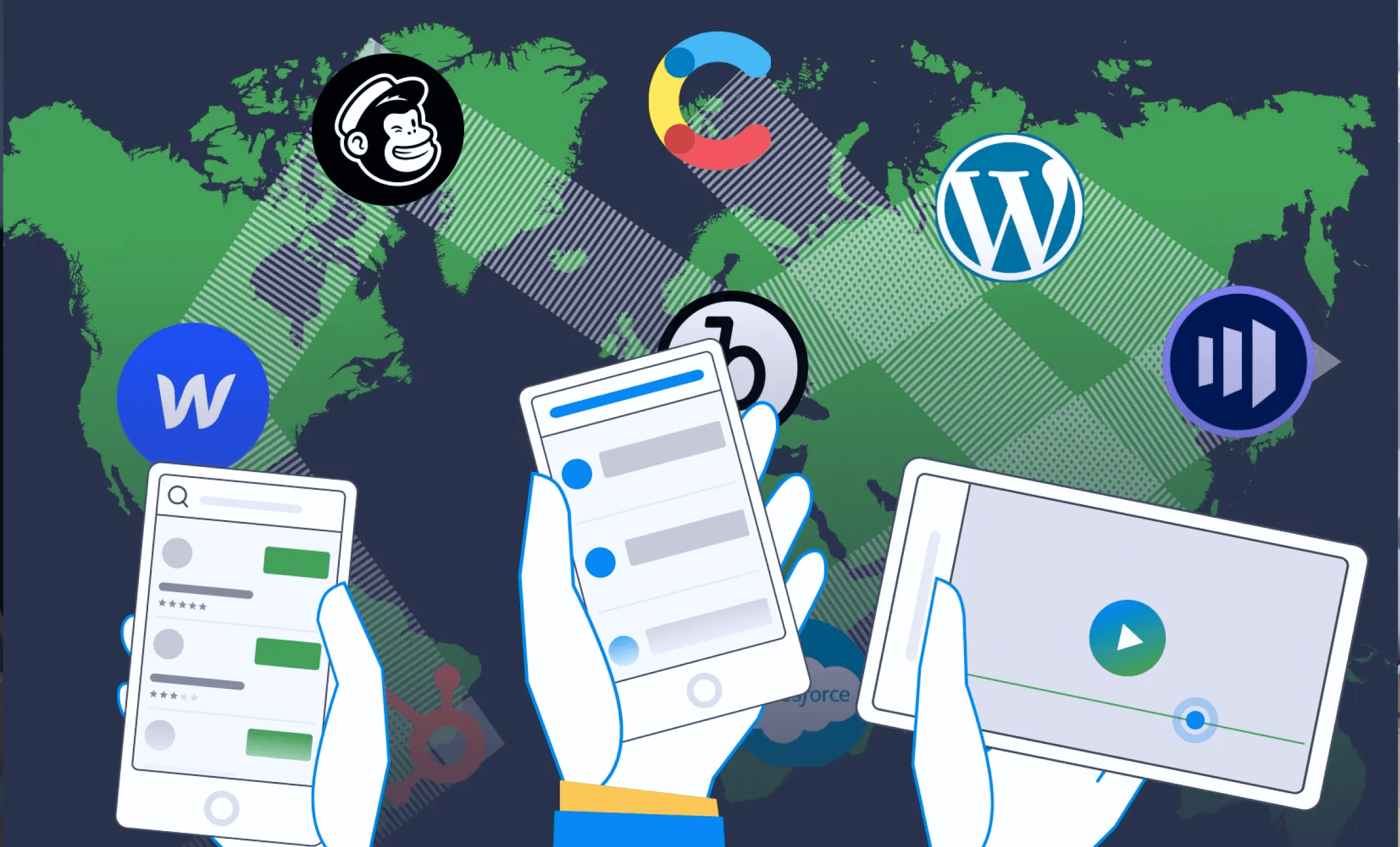Multilingual Content Generation for Various Business Domains
Multilingual content generation involves creating content in multiple languages to reach diverse audiences globally. It’s important because it helps businesses and organizations connect with a broader audience, enhance user experience, and drive engagement by catering to the linguistic preferences of different regions. This practice fosters inclusivity and can significantly boost market penetration and customer loyalty.
Catering to diverse business domains with multilingual content involves tailoring communications to meet the specific language and cultural needs of various industries, such as healthcare, finance, and technology. This approach enhances relevance and accessibility, fostering better customer relationships, compliance with local regulations, and a competitive edge in global markets.
In this article, we will take a closer look at multilingual content creation and how it can benefit your business.
Understanding Multilingual Content Creation

Multilingual content is crucial for reaching global audiences as it allows businesses to communicate effectively with people from different linguistic backgrounds. This not only expands market reach and customer base but also builds trust and engagement by showing respect for and understanding of local cultures and languages.
Some techniques for crafting culturally relevant and linguistically accurate content include:
- Localization – Tailor content to the specific cultural and regional nuances of the target audience, including local idioms, traditions, and preferences, to ensure it resonates authentically.
- Transcreation – Go beyond direct translation to adapt the original message creatively, ensuring the tone, style, and emotional impact are preserved in the target language.
- Cultural Consultation – Involve native speakers and cultural experts in the content creation process to provide insights and feedback on cultural appropriateness and linguistic accuracy.
- Glossaries and Style Guides – Develop comprehensive glossaries and style guides for each target language, ensuring consistency in terminology, tone, and style across all content.
- User Testing – Conduct user testing with native speakers from the target audience to identify and correct any cultural or linguistic inaccuracies before finalizing the content.
Strategies for Multilingual Content Marketing
When exploring a multilingual marketing strategy, the exact tactics you will use will depend on your domain. Below are some examples for three different industries:
- E-commerce – Implement localized SEO strategies by optimizing product descriptions, meta tags, and keywords in multiple languages. Use culturally relevant images and promotional materials tailored to regional shopping habits and preferences to boost engagement and sales.
- Travel and Hospitality – Create multilingual blog posts, travel guides, and social media content that highlight local attractions and cultural experiences. Partner with local influencers to share content in their native language, enhancing authenticity and trust among potential travelers.
- Healthcare – Develop multilingual educational resources, such as brochures, videos, and website content, to provide clear and accurate health information. Ensure these materials consider cultural health beliefs and practices, helping to build trust and improve patient outcomes across diverse populations.
SEO optimization in multiple languages involves tailoring keywords, meta tags, and content to the linguistic and cultural preferences of different regions. This enhances search engine visibility and relevance, driving more organic traffic and improving audience engagement by making it easier for users to find content that resonates with them in their native language.
Tools and Technologies for Multilingual Content Generation

Several software and platforms facilitate multilingual content creation, including:
- SDL Trados Studio: A comprehensive translation software that helps manage multilingual text and ensure consistency across translations with its robust CAT (Computer-Assisted Translation) tools.
- MemoQ: A collaborative translation environment that offers advanced features for project management, translation memory, and terminology management to streamline the multilingual text creation process.
- WordPress with WPML (WordPress Multilingual Plugin): Enables website owners to create and manage multilingual websites, making it easy to translate and display text in multiple languages.
- Crowdin: A cloud-based localization management platform that supports collaboration between translators, developers, and project managers for efficient multilingual text development.
- Google Translate Toolkit: Provides tools for translating documents and web content, allowing for human editing and collaborative translations to improve accuracy and cultural relevance.
Integrating translation tools and language processing technologies streamlines the multilingual text creation process by automating translations and ensuring consistency and accuracy. These integrations enable seamless workflows, where machine translation is augmented with human expertise, resulting in faster turnaround times and culturally relevant text that effectively engages diverse audiences.
Quality Assurance in Multilingual Content Generation
Strategies for ensuring linguistic accuracy and cultural sensitivity include:
- Hiring Native Speakers – Engage native speakers for translation and text creation to ensure linguistic nuances and cultural contexts are accurately represented. This can be especially important in multilingual social media marketing.
- Cultural Audits – Conduct thorough cultural audits to review text for cultural appropriateness, avoiding potential misunderstandings or offensive elements.
- Feedback Loops – Establish feedback loops with local stakeholders or target audience members to continually refine and adapt text based on real-world insights and reactions.
- Training and Education – Provide ongoing training for text creators and translators on cultural competence and sensitivity to stay informed about evolving cultural norms and language usage.
- Quality Assurance Processes – Implement rigorous quality assurance processes, including multiple rounds of editing and review by cultural and linguistic experts, to ensure high standards of accuracy and relevance.
Quality control measures are vital for effective multilingual communication as they ensure the accuracy, consistency, and cultural relevance of text across different languages. These measures help maintain the credibility and professionalism of the message, fostering trust and engagement with diverse audiences.
Domain-Specific Multilingual Content Strategies
Customizing text generation approaches for specific industries or domains involves tailoring messaging, tone, and delivery methods to address the unique needs, challenges, and preferences of the target audience within that sector. By understanding the industry-specific language, trends, and pain points, businesses can create more relevant and impactful text that resonates with their intended audience, ultimately driving engagement, loyalty, and business success.
Addressing challenges in domain-specific multilingual text creation requires careful attention to industry-specific terminology, regulations, and cultural sensitivities. Involves overcoming linguistic barriers while ensuring accuracy and compliance with local laws and standards, ultimately aiming to deliver text that effectively communicates the intended message and resonates with diverse audiences within the target industry. This is very important in things like language-based audience segmentation.
Evaluating Multilingual Content Generation Performance
Metrics for assessing the effectiveness and impact of multilingual text include:
- Engagement Metrics – Measure metrics such as page views, time spent on a page, bounce rates, and social media shares to gauge audience interest and interaction with the text across different language versions.
- Conversion Rates– Track conversion rates, such as click-through rates, form submissions, or purchases, to assess the effectiveness of multilingual text in driving desired actions or conversions.
- Audience Feedback – Gather feedback from users through surveys, comments, or reviews to understand perceptions, preferences, and areas for improvement regarding multilingual content.
- SEO Performance – Analyze search engine rankings, organic traffic, and keyword performance for each language version to assess visibility and effectiveness in reaching target audiences.
- Localization Quality – Evaluate the accuracy, relevance, and cultural appropriateness of multilingual text through linguistic reviews, cultural audits, and user testing to ensure high-quality localization and cultural sensitivity.
Techniques for evaluating audience response and engagement across different languages involve analyzing language-specific metrics such as click-through rates, conversion rates, and social media interactions. Additionally, conducting A/B testing with different language variations, monitoring comments and feedback in various languages, and utilizing sentiment analysis tools can provide insights into audience sentiment and preferences, enabling businesses to tailor text strategies effectively for multilingual voice search optimization and many other things.
Challenges and Future Directions
Current challenges in multilingual content generation include ensuring linguistic accuracy and cultural sensitivity across diverse languages, managing translation costs and turnaround times, and maintaining consistency and brand voice across different language versions. Additionally, navigating complex regulatory requirements, addressing regional dialects and language variations, and leveraging appropriate technology while avoiding over-reliance on automated translation tools present ongoing hurdles for businesses aiming to effectively reach global audiences.
Emerging trends in catering to diverse linguistic audiences include the integration of artificial intelligence and machine learning for more accurate and efficient translation, as well as the rise of adaptive text strategies that dynamically adjust language and messaging based on user behavior and preferences. Furthermore, there’s a growing emphasis on user-generated text and community-driven localization efforts to foster authentic engagement, multilingual text for mobile apps, and relevance across global markets.
Conclusion
Key insights into multilingual content generation for various business domains emphasize the importance of linguistic accuracy, cultural sensitivity, and industry-specific customization. Successful strategies involve leveraging technology, engaging native speakers, and implementing robust quality control measures to effectively reach diverse audiences, drive engagement, and achieve business objectives across global markets.
Effective multilingual text generation holds significant implications for global business growth by expanding market reach, enhancing customer engagement, and fostering brand trust across diverse linguistic and cultural landscapes. By effectively communicating with international audiences in their native languages, businesses can drive increased brand awareness, customer loyalty, and revenue generation, ultimately positioning themselves for sustainable success in global markets.




